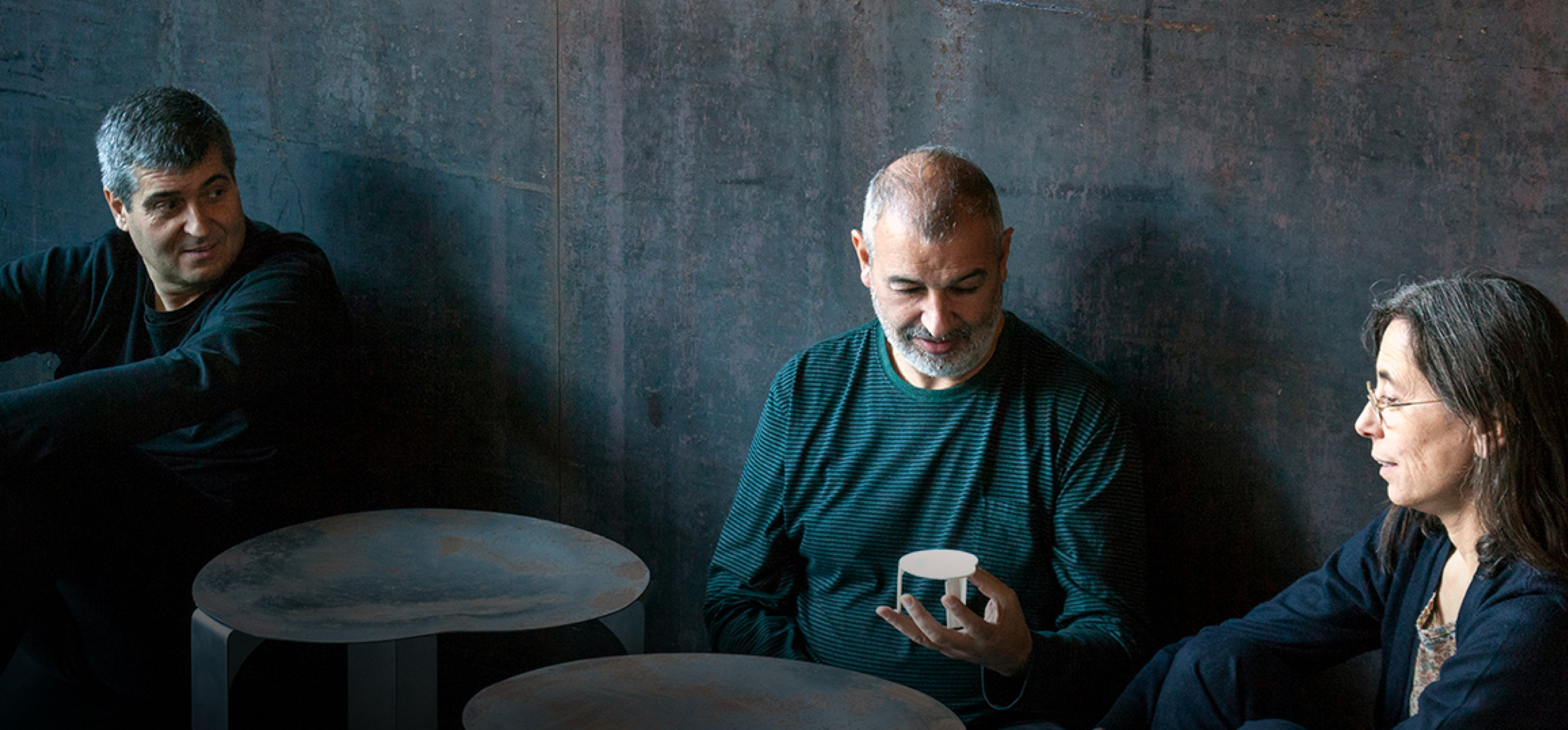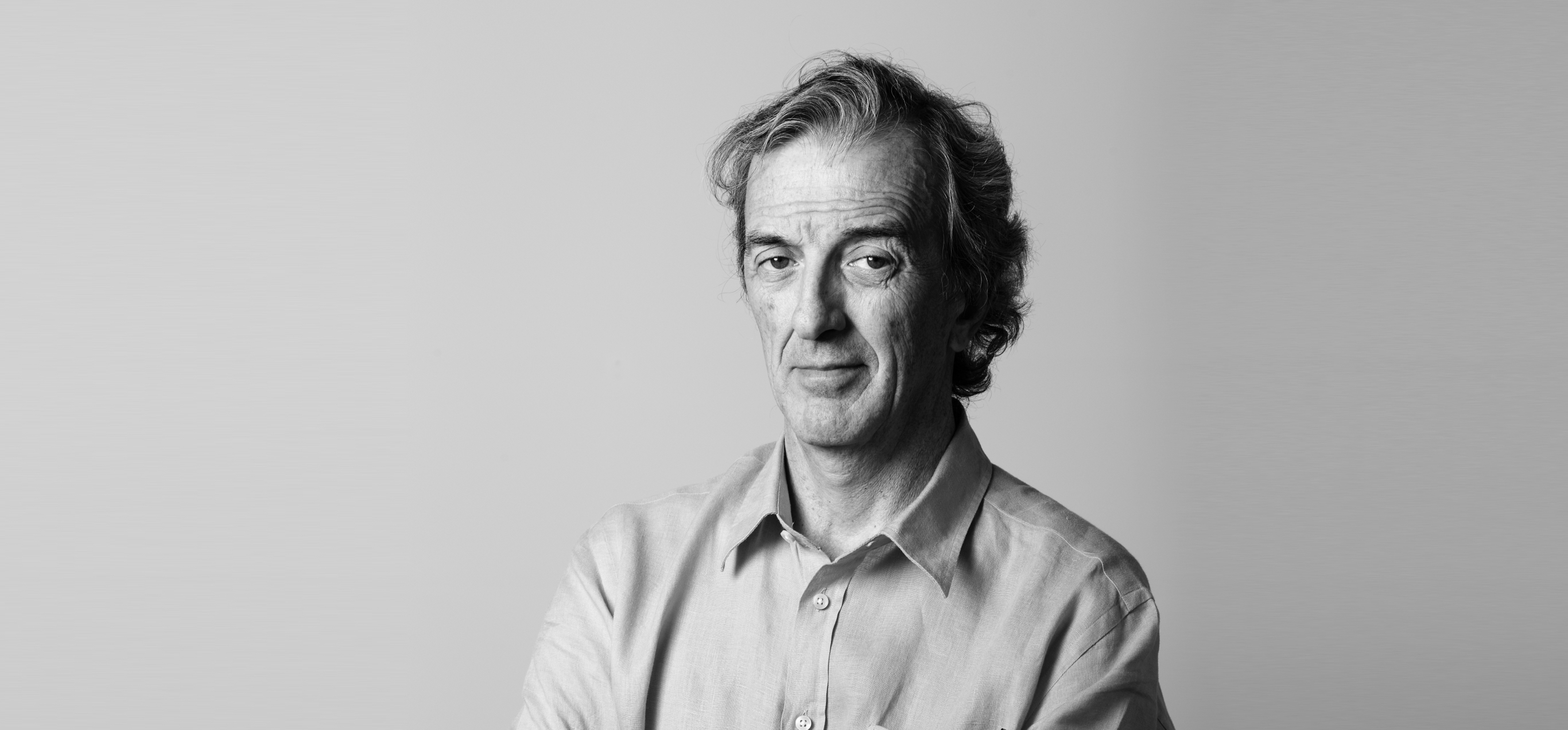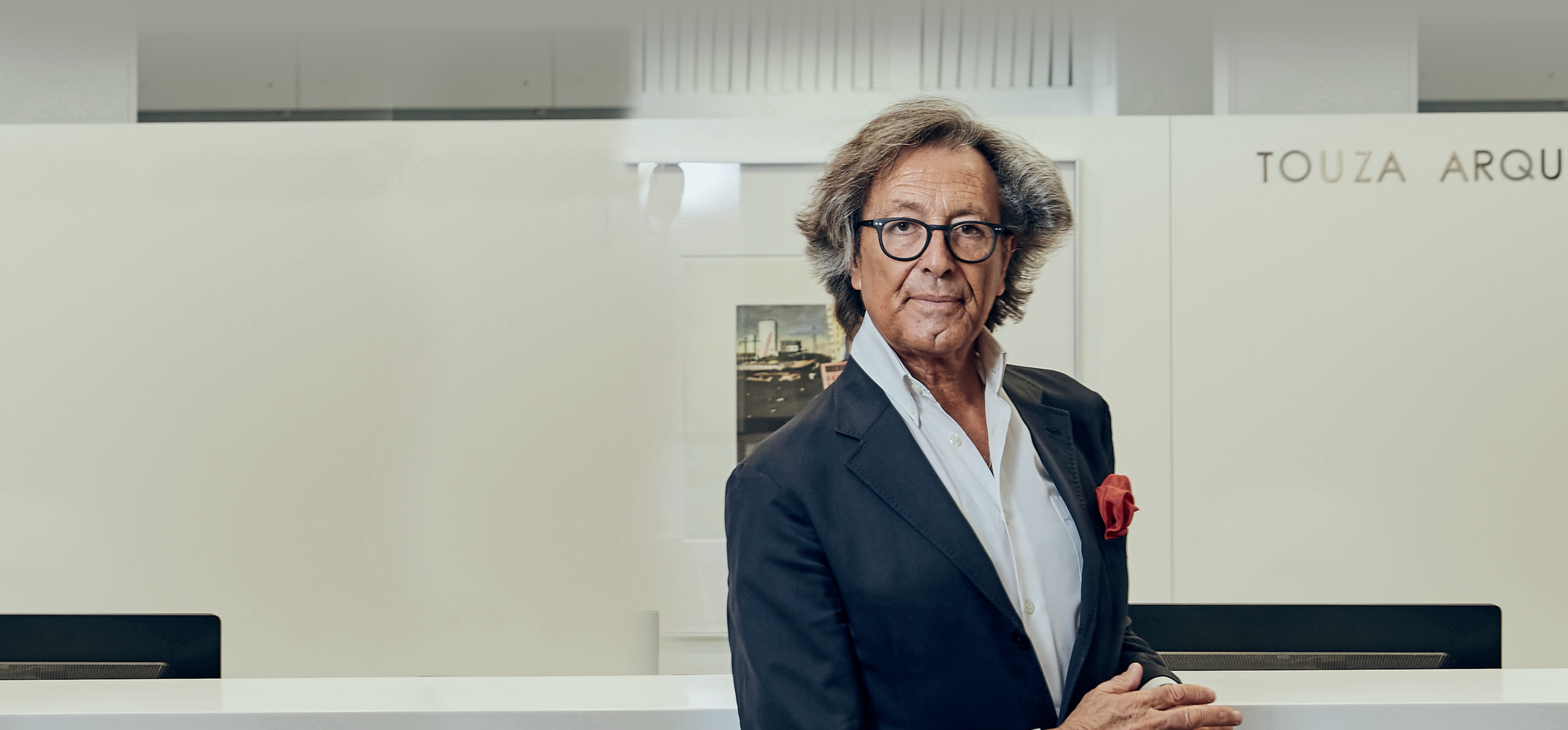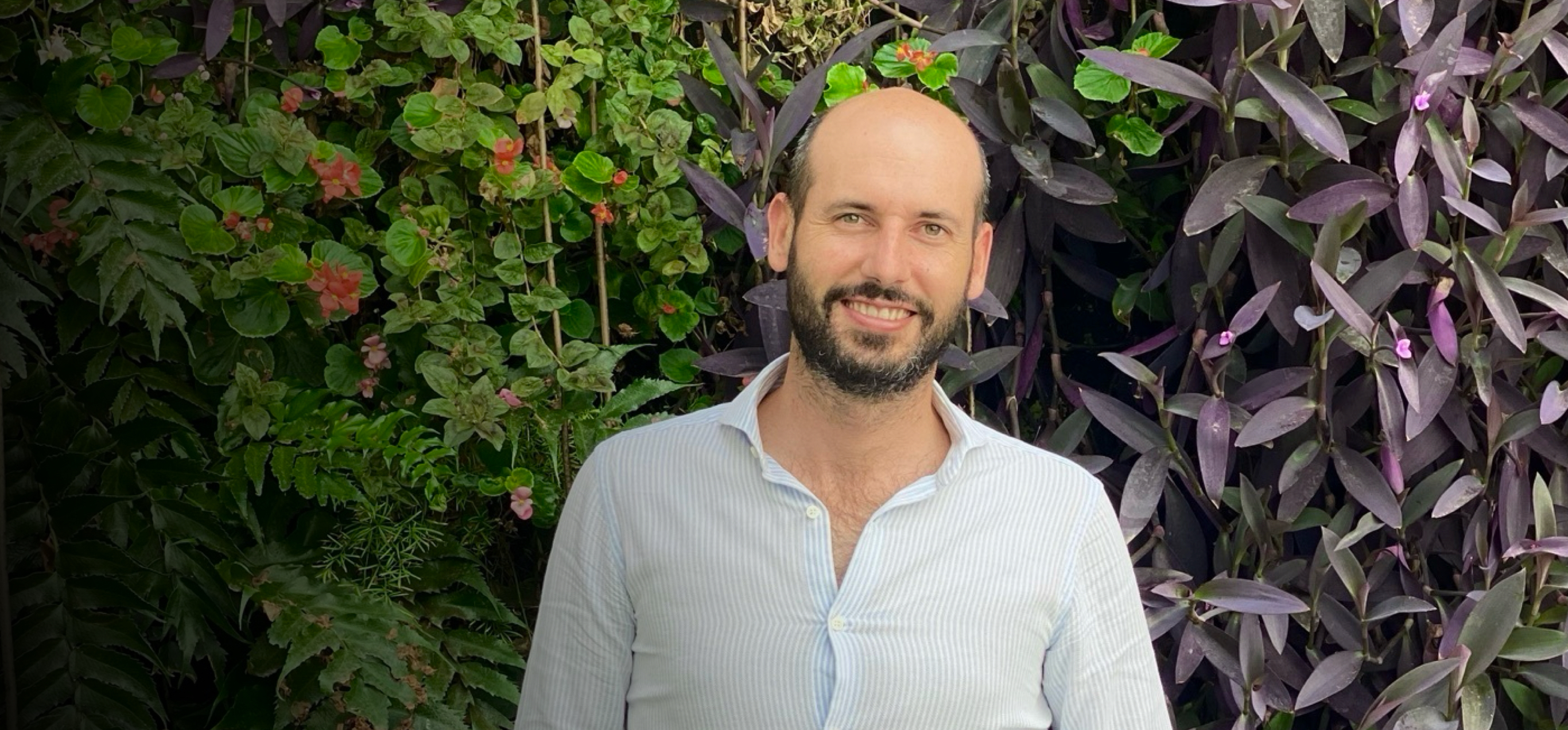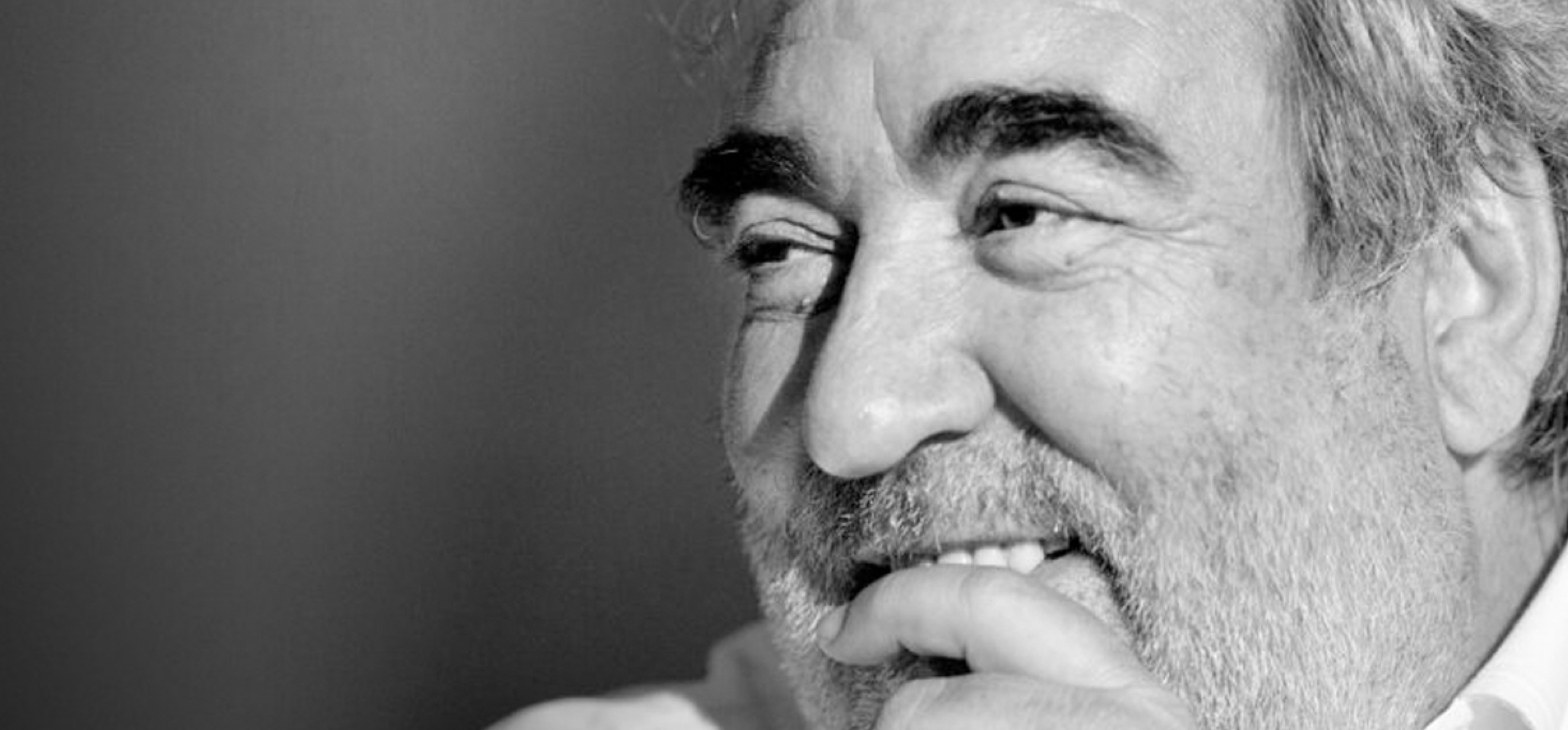
Eduardo Souto de Moura
Eduardo Souto de Moura, winner of the 2011 Pritzker Prize, has gone from being a disciple of Siza and admirer of Mies to consolidating his own language, based on adaptation and lack of prejudice. And he has done so throughout an enormously successful, but always honest and socially responsible career. At no time has he ever turned his back on the power of architecture as an agent of social transformation, but neither has he remained functional. For him, art and architecture go hand in hand. In his own words, his concept of luxury is "Four well-made white walls with a Picasso in the middle".

In his understanding of architecture, places play a fundamental role. It is a process of eternal return, of revisiting and rethinking what is known. A way of making ordinary places extraordinary. If we think of his favourite project, the Braga Municipal Stadium, we remember that at some point it contained the house where his father was born. If we remember the Pousada de Santa María do Bouro, restored by him, we will read that, within its walls, years before, his uncle practised medicine and his mother recovered from a long illness. Synchronicities that reveal an encompassing universe that has been expanding as the architect designed it. Personal memories transformed into universal spaces.

The Calanda market, a marvellous rationalist work conceived as a place for the community, deserves special mention. A covered street that, over time, became obsolete. New consumer habits, the growth of the neighbourhood and its structural deterioration were definitive: when the city council asked Souto de Moura what he planned to do to restore it, he replied that he would demolish it. And he did, at least in part. The architect removed the roof and created a landscaped passageway, flanked by the old columns with their heads removed, supporting the void and with the concrete framework twisted against the sky. This created the perfect setting for a new function: music school and cultural centre.
A new approach while maintaining its spatial and social cohesion function. A different use with the same purpose.
From the hands and imagination of Souto de Moura has come our project The One. A modern residential complex that is integrated into the Avenida de João XXI in Lisbon. A neighbourhood of art deco buildings, among which The One stands out without interfering. Its simple façade leaves the structural framework in the foreground and the homes open onto the street through huge windows. A project where every detail is designed to increase the quality of life of the residents. From the smallest piece, to the very concept of the building and its relationship with its surroundings. Something that is only within the reach of the greatest architects.





Contemporary, but without renouncing tradition. This is how the work of Eduardo Souto de Moura was judged by those who decided to award him the so-called "Nobel Prize for Architecture". But who really is this great Portuguese architect who defends the coexistence of buildings with nature, is committed to a minimalist style and has become an expert in reconversion?
Eduardo Souto de Moura, how the architect was formed
Born in Porto on 25 July 1952, Eduardo Elísio Machado Souto de Moura, the son of an ophthalmologist and a housewife, studied at the now defunct School of Fine Arts in the Portuguese city and at the Faculty of Architecture of the University of Porto. He attributes his transcendental decision to devote himself to architecture to a meeting in Zurich (Switzerland) with the American artist Donal Judd, associated with the Minimalist movement.
As a student, Souto de Moura collaborated with architects Noé Diniz and Álvaro Siza. And in 1980, after graduating, he began his career as an independent architect, tackling one of his most emblematic projects: the Carandá Municipal Market in Braga. A work that he planned as a covered street and which, decades later, stifled by the proliferation of other constructions in its surroundings, was rethought as a music school and cultural centre.
Since those beginnings, Eduardo Souto's architectural vision has been reflected in numerous works: residential complexes, single-family houses, cultural and sports spaces, etc.
This experience has been shared as a teacher. A facet that began in 1981 when he was appointed a career assistant at the Faculty of Architecture of the University of Porto. An institution where he taught until 1990 and to which he returned in 2003. Similarly, he has been a guest lecturer at several European schools and faculties of architecture. Among them:
- Faculty of Architecture of Paris-Belleville (1988).
- Harvard and Dublin Schools of Architecture (1989).
- ETH Zurich (1990 and 1991).
- Lausanne School of Architecture (1994).
Faithful to the town where he was born, Souto de Moura lives in a house designed by him and located in a very exclusive area of Oporto: Foz do Douro. Both his wife and two of his daughters are architects. And he works in a studio in a building he shares with two other stars of Portuguese architecture: Álvaro Siza and Rogério Cavaca.

Characteristics of the architecture of Souto de Moura
As for the characteristics of Eduardo Souto de Moura's architecture, the Portuguese architect does not hide who his main influences have been.
- Álvaro Siza. One of Portugal's most important architects. Winner of, among other awards, the prestigious Pritzker Prize in 1992 and the Spanish National Architecture Prize in 2019.
- Ludwig Mies van der Rohe. One of the sons of the Bauhaus and father, together with Le Cobusier and Gropius, of the international style and modern movement.
- Aldo Rossi. Although he disliked this attribution, the Italian architect is considered one of the leading exponents of the postmodern movement, which earned him the Pritzker Prize in 1990.
- Craig Elwood and Pierre Koening. Of these two American architects, the Portuguese architect is interested in the Californian experience of the 1950s and 1960s.
- Donal Judd and Sol LeWitt. Both are considered references of minimalism. As mentioned above, the former influenced Eduardo Souto's decision to become an architect.
- Fernando Pessoa. Whether under his real name or under the heteronym Bernardo Soares, the multifaceted Portuguese poet has also influenced the architect from Oporto.
- Roland Barthes. A member of the linguistic structuralism movement, the French thinker and writer has been another reference for Eduardo Souto de Moura.
- Antoni Tàpies. The work of the Barcelona painter and sculptor had great international repercussions. And the Portuguese architect was no stranger to it.
- Joseph Beuys. The German artist worked with various media and techniques. Among them, sculpture.
When Eduardo Souto de Moura talks about his works, he recognises that he seeks to create an exact landscape. A lover of originality, sustainability and respect for the environment, he stands out for his exquisite use of materials (steel, granite, concrete, brick, wood, marble...). And he does not hesitate to say that he would have liked to design the Parthenon in Athens or the German Pavilion that Ludwig Mies van der Rohe and Lilly Reich designed for the 1929 Barcelona International Exposition.
In the film The Meaning of Architecture produced by Kronos Homes, Souto de Moura states that, for him, "architecture is a service. In my case, it starts with form and then I make a synthesis based on intuition. When I build, I transform. And I transform as I am presented with a problem. Each case is different.

Souto de Moura awards and acknowledgements
The Portuguese architect's extensive and outstanding professional career was recognised with the Pritzker Prize in 2011. But architecture's highest accolade is not the only award that Souto de Moura has won. Among others, it is worth mentioning the following awards:
- Prize awarded by the Fundação Eng. António de Almeida. 1980.
- Secil Award. 1992 y 2004.
- International Stone in Architecture Award. 1995.
- Pessoa Prize. 1998.
- Prize of the Ibero-American Biennial of Architecture and Urbanism. 1998.
- Heinrich Tessenow Medal. 2001.
- Chicago International Architecture Prize. 2006.
Famous works by Eduardo Souto de Moura
When the time comes to embark on a project, Souto de Moura is clear that it is an exercise in responsibility. "People are going to remember the before and after of that place," he observes in the film The Meaning of Architecture. And he recognises that architects must reduce their world to a piece of paper. "That's why they are schizophrenic," he warns.
He also admits that he likes to take on projects ranging from small to large-scale projects. Thus, he is just as willing to design a single-family house or a residential complex as he is to design the Braga Municipal Stadium, one of his most iconic works.
Among others, these are some of the most outstanding works that the Portuguese architect has led:
- Conversion of ruins in Vieira do Minho. Portugal.
- Houses in Nevogilde. Porto, Portugal.
- Braga Municipal Market. Portugal.
- House in Quinta do Lago. Algarve, Portugal.
- House in Alcanena. Torres Novas, Portugal.
- House in Tavira. Algarve, Portugal.
- Refurbishment of the Alfándega building, in the Museum of Transport and Communications in Porto. Portugal.
- Residential Building in Rua do Teatro. Porto, Portugal.
- House in Moledo. Caminha, Portugal.
- Rehabilitation for the Parador of the Monastery of Santa Maria de Bouro. Braga, Portugal.
- Portuguese Pavilion for Expo 98 in Lisbon -along with Álvaro Siza-. Portugal.
- Portuguese Pavilion for the Expo 2000 in Hannover. Germany.
- Casa do Cinema de Manoel de Oliveira. Porto, Portugal.
- Casa da Música Station of the Oporto Metro. Portugal.
- Braga Municipal Stadium. Portugal.
- Burgo office complex. Porto, Portugal.
- Paula Rêgo Museum. Cascais, Portugal.
- Uitzicht Crematorium. Cortrique, Belgium.
- Viana do Castelo Cultural Centre. Portugal.
- Municipio metro station -next to Álvaro Siza-. Naples, Italy.

Projects by Souto de Moura at Kronos Homes
During his professional career, Souto de Moura has designed numerous homes. Among them are those that form part of The One project by Kronos Homes in Lisbon. This is the Portuguese architect's most urban vision of architecture. A unique creation that sets a new standard of quality in the residential offer of the Portuguese capital.
"My father is a big fan of Eduardo. So I've known his work for more than 20 years. And when we started growing up in Lisbon, it was always clear to me that we should work together. It has been an honour to collaborate with him and to learn more about his perception of architecture, which is very different from that of other architects," says Saïd Hejal, CEO of Kronos Homes, in The Sense of Architecture.
The result is a residential complex located on João XXI Avenue - one of the best areas of Lisbon - characterised by its elegance, luminosity, sustainability and communal spaces. Another legacy of someone who believes that it is enough to exist to leave a memory. "I would like to know if I have contributed anything to people's happiness", asks Eduardo Souto de Moura in the Kronos Homes film.
News
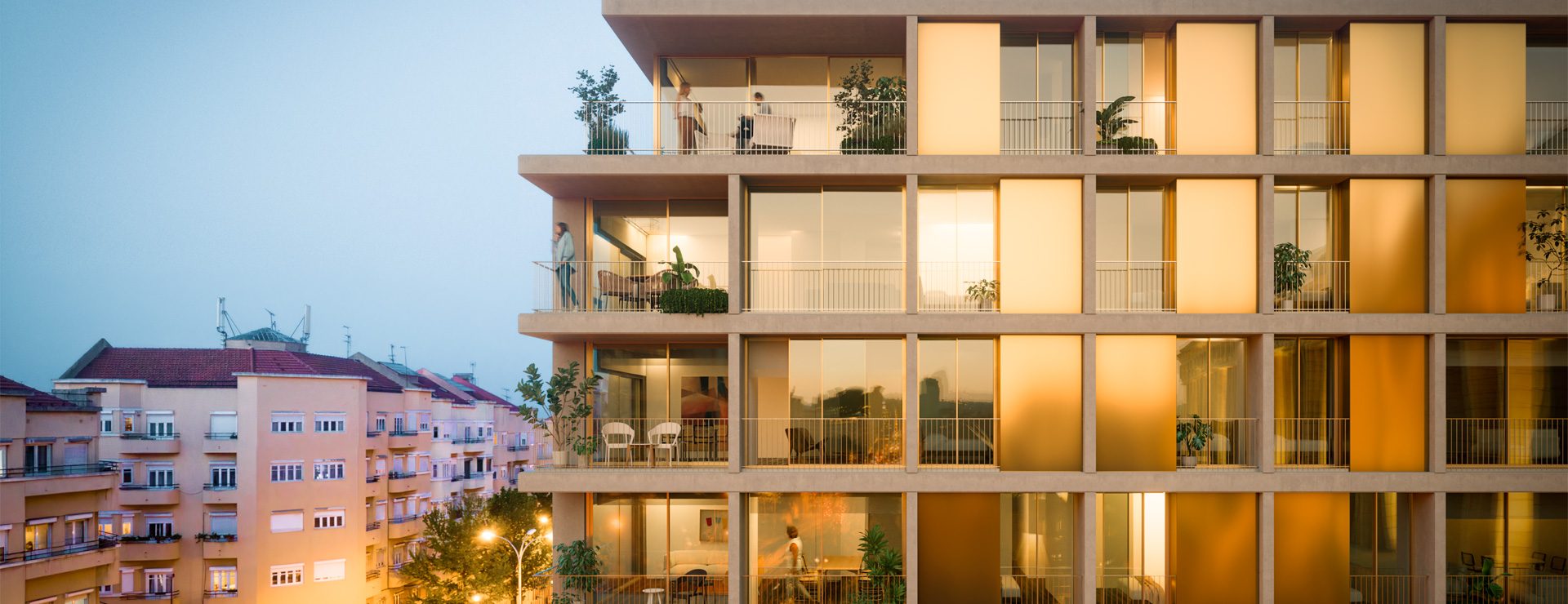



.jpg)



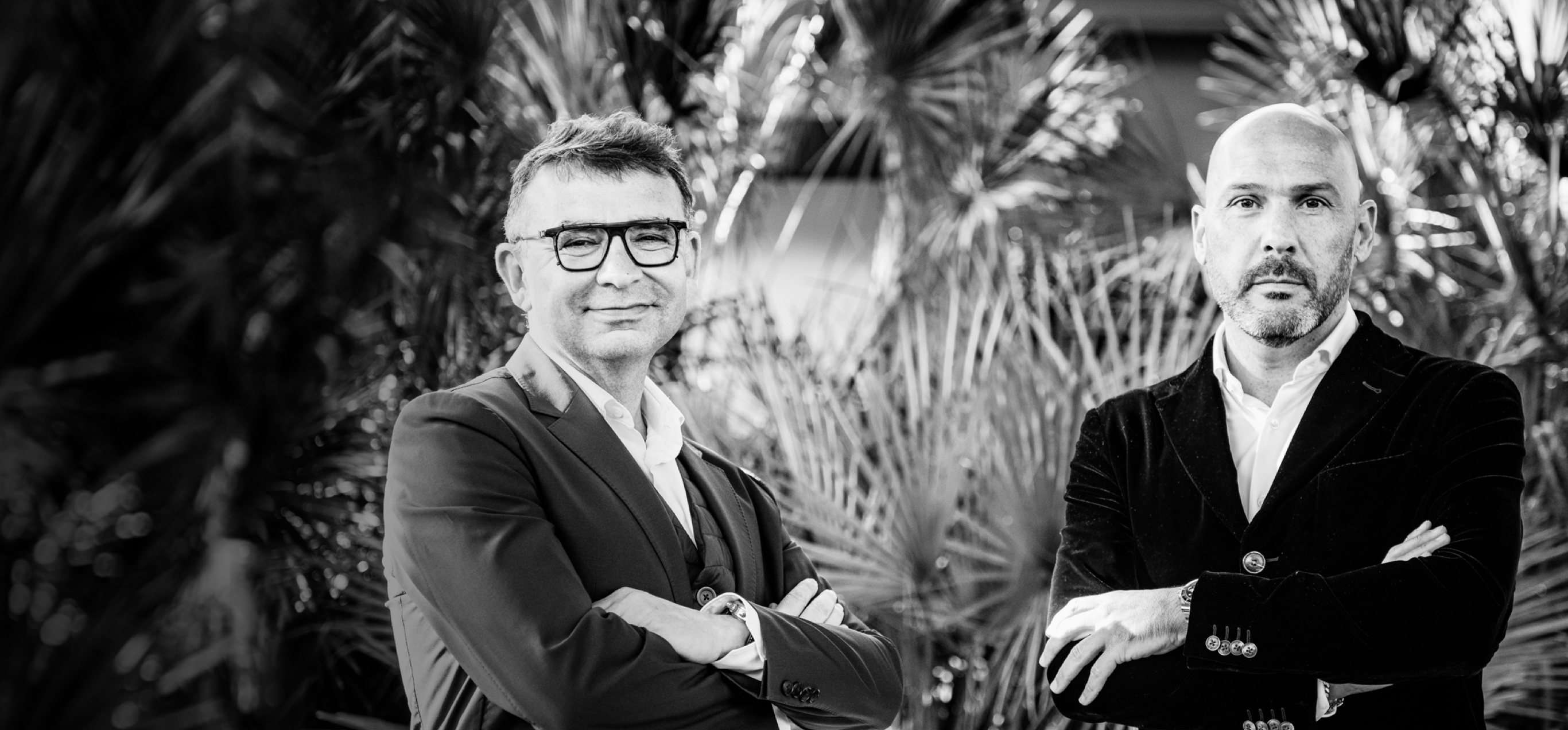

.png)
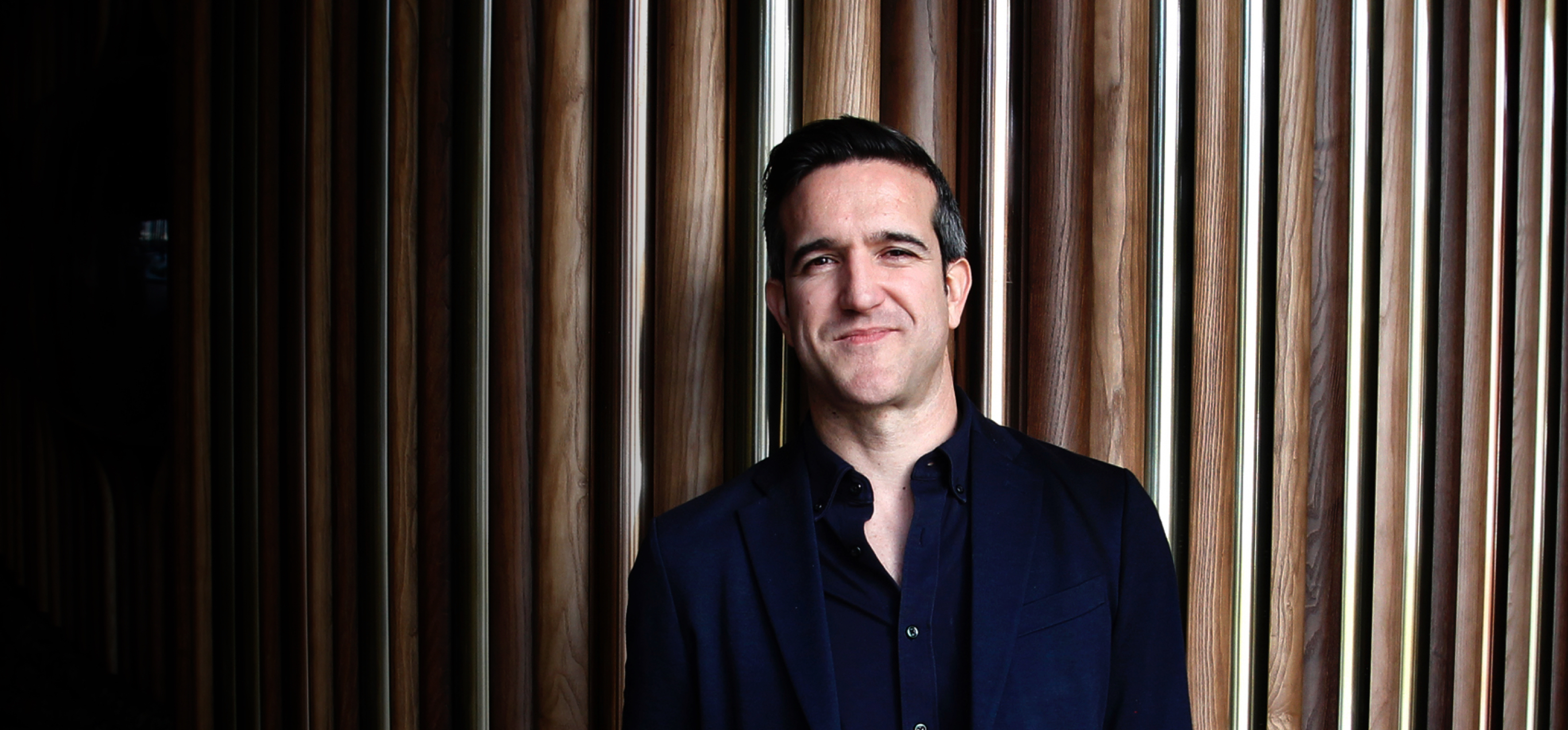


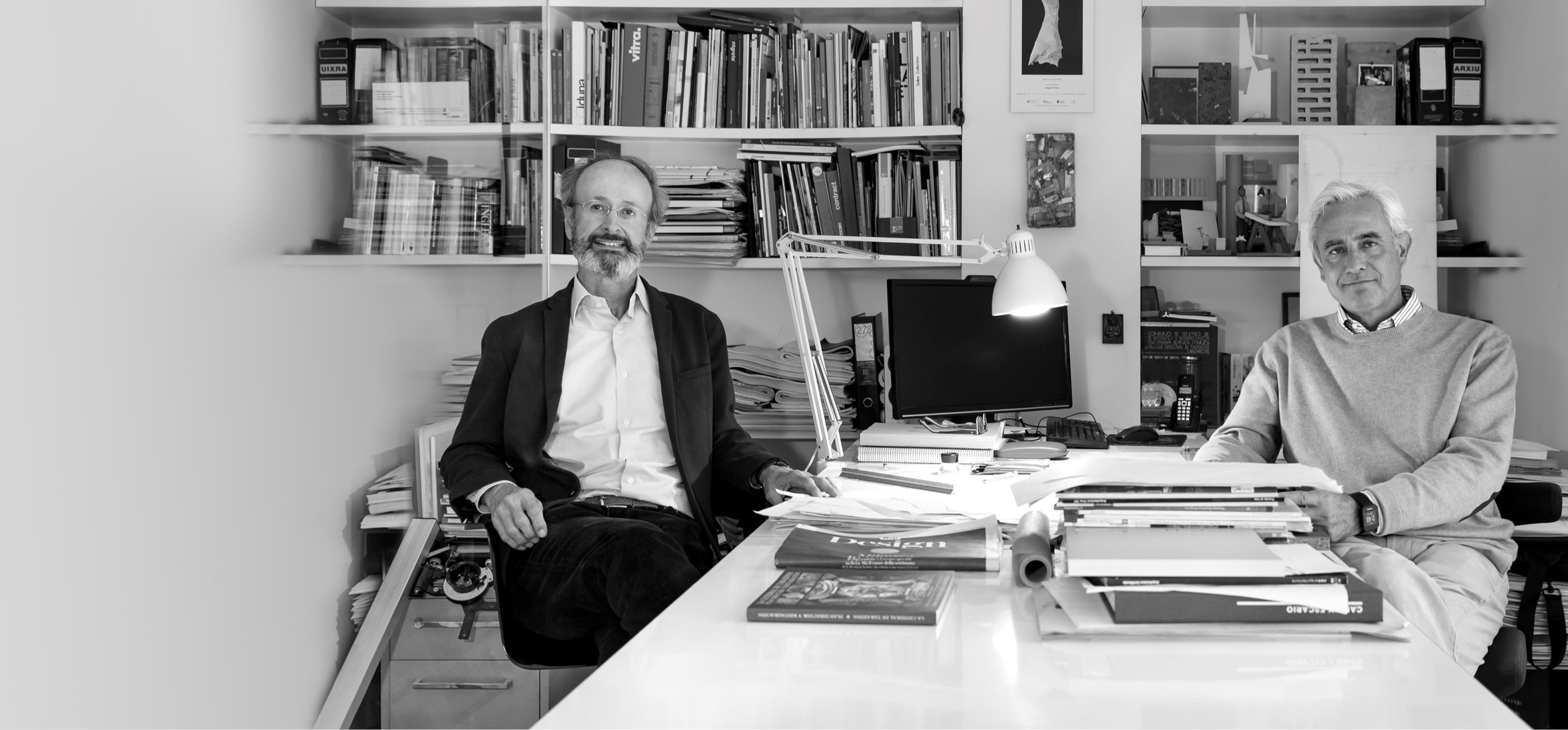
.jpg)
